This easy dairy-free basil pesto uses nuts (like cashews, walnuts, or pine nuts), olive oil and garlic, and is the perfect way to use and preserve fresh basil from your garden. Freeze the pesto for later!
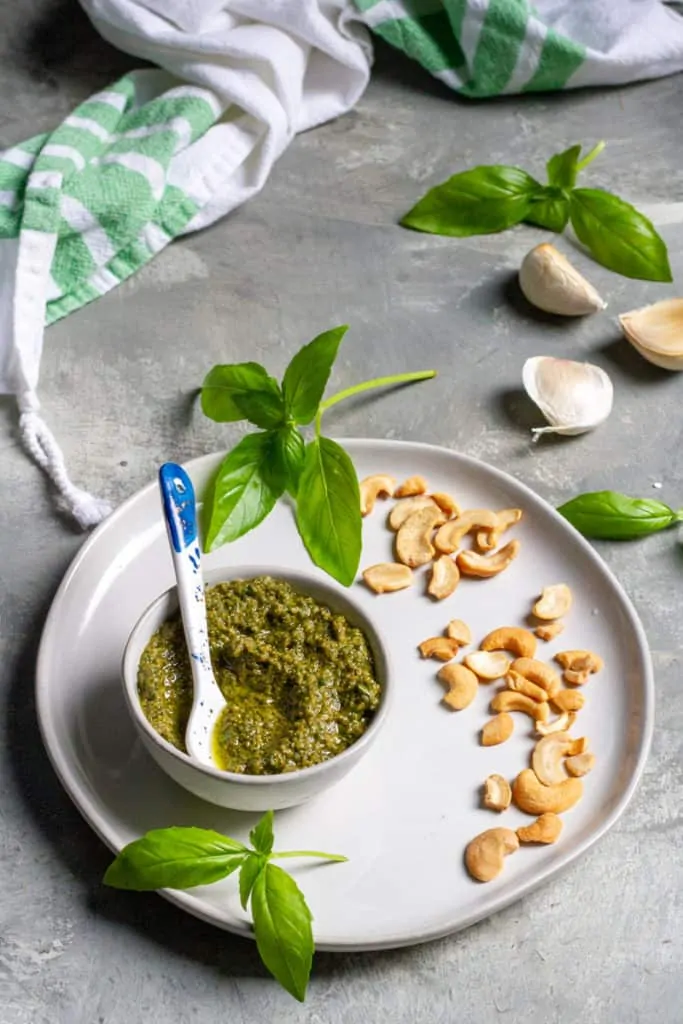
Are you growing basil this year?
I've got at least seven basil plants in my garden, and no matter how often I cut them back, they seem to grow bigger and bigger each day.
It's a good problem to have.
I started off the summer simply trimming back the basil when I wanted a fresh herb garnish for a meal, then I started making basil infused water.
Next, I moved onto basil simple syrup and basil lemonade.
Recently, however, when I saw my plants becoming more and more massive, I knew that I needed to start cutting back and preserving larger batches of basil. I started making batches of basil vinegar, basil butter, and, of course, pesto.
This dairy-free basil pesto is the perfect way to preserve fresh basil and have the taste of summer all year long.
If you've made all the basil recipes you can think of but still have more basil, you can also freeze basil leaves.
Why Make Pesto Dairy-Free?
Traditionally, basil pesto includes cheese, usually Parmesan. Why skip the cheese?
For a few reasons.
First, if you're attempting to preserve a massive amount of basil, the cost of making pesto can add up pretty quickly. Leaving out the cheese cuts the cost.
Cutting out the only perishable ingredient (aside from basil, which is probably growing in your garden), makes this recipe easier to attain if you're cooking from pantry staples. Since getting to the grocery store is challenging right now, I call that a win.
Also, basil pesto tastes absolutely delicious without any cheese at all. Seriously, it does. And I love cheese.
Additionally, if you want cheese in the finished recipe, it's simple to grate fresh Parmesan onto your food when you're ready to use the basil.
That said, if you have Parmesan on hand while you're making this pesto and want to add it, you absolutely can. It just won't be dairy-free anymore.
Can I Add A Cheese Flavor Without Dairy?
Yes, you sure can!
If you want to add a cheesy flavor to your pesto, and don't intend to use actual cheese later on, I recommend adding nutritional yeast. I buy Bragg's nutritional yeast.
What Kind of Basil Can I Use?
Use whatever basil you have on hand!
Did you grow cinnamon basil, and have no clue what to do with it? Throw some in your pesto.
This recipe works perfectly with mild basils like sweet basil and Genovese basil, and is also delicious with spicier basils such as spicy globe basil, Thai basil, and purple basil.
Keep in mind that pesto made with spicier basils will be, well, spicier than a basil pesto made with all sweet basil.
But it'll still be delicious, and maybe spicy basil pesto will become your new favorite ingredient.
What Kind of Nuts Should I Use?
Traditionally, basil pesto is made with pine nuts.
I rarely have pine nuts on hand.
Pesto is also delicious with walnuts or cashews. I usually use cashews.
I don't recommend using pecans. The batches I've tried with pecans had an odd flavor.
Is Homemade Pesto Worth the Effort?
Absolutely.
First of all, it's not much work. Really, it comes together very quickly.
Plus, it's a wonderful way to preserve your hard-earned garden herbs.
But also, and importantly, it's difficult to find a store-bought basil pesto that uses all quality ingredients.
For example, both Roa's and Barilla's basil pesto include potato flakes, and most store-bought basil pestos (like Prego and Classico) use mostly sunflower or soybean oil instead of all olive oil.
That doesn't mean you shouldn't ever use store-bought pesto, but if you have an opportunity to make your own, then yes, it's absolutely worth it.
Do I Really Need a Food Processor?
I recommend using one.
I use a KitchenAid 5-cup food processor, and love it. It's small, but not too small (for me).
Traditionally, basil pesto was made using a large mortar and pestle. I do have a mortar and pestle, but it's not large enough for pesto-making.
And while a blender might seem like a tempting choice, a food processor will work better. You want to chop, not pulverize the food.
Plus, blenders tend to require more liquid than food processors, so you'll likely have to add a lot more oil to make this in a blender.
How to Make Dairy-Free Basil Pesto
I like to start by adding the garlic and nuts to the food processor, because they need a little more chopping than the basil does.
Use the chop setting to finely dice the garlic and nuts.
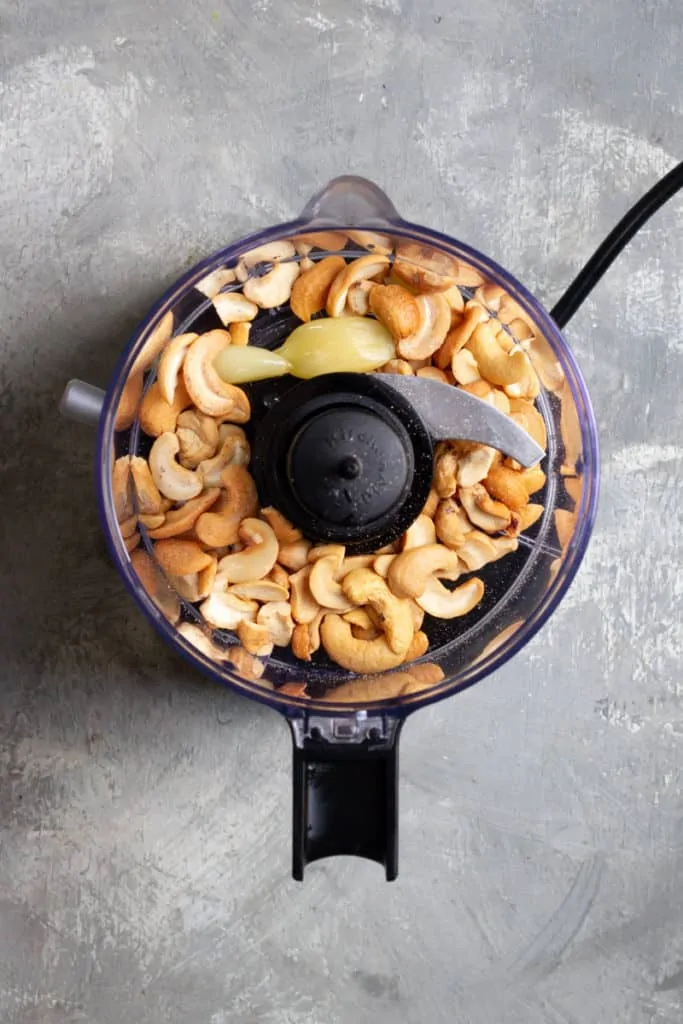
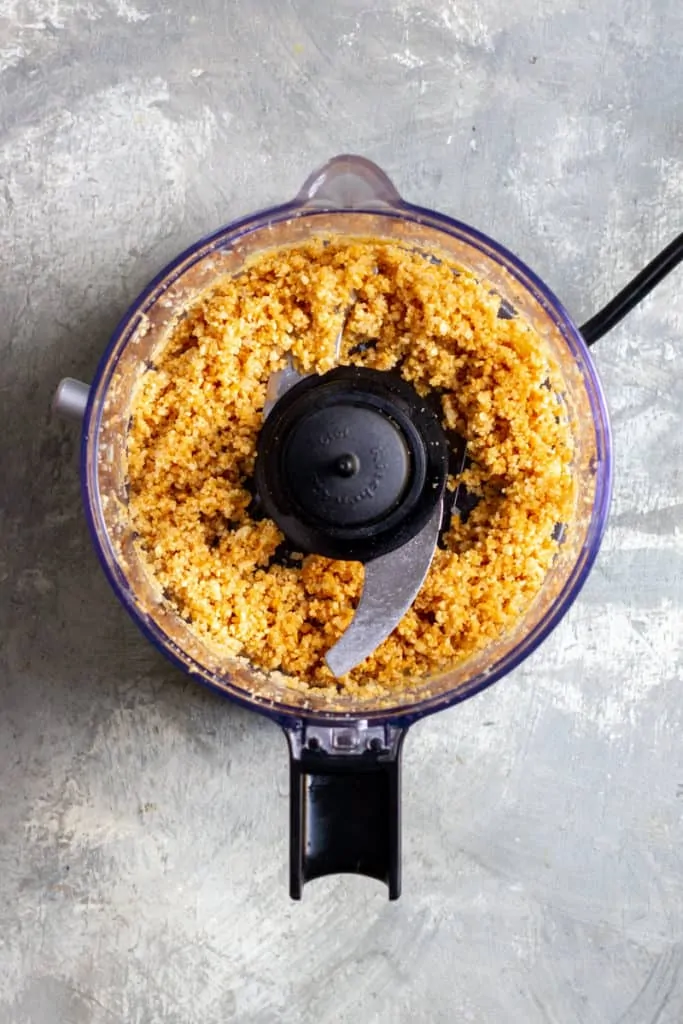
Next, add two cups of fresh basil.
It's okay if you need to pack it into the basin a little bit.
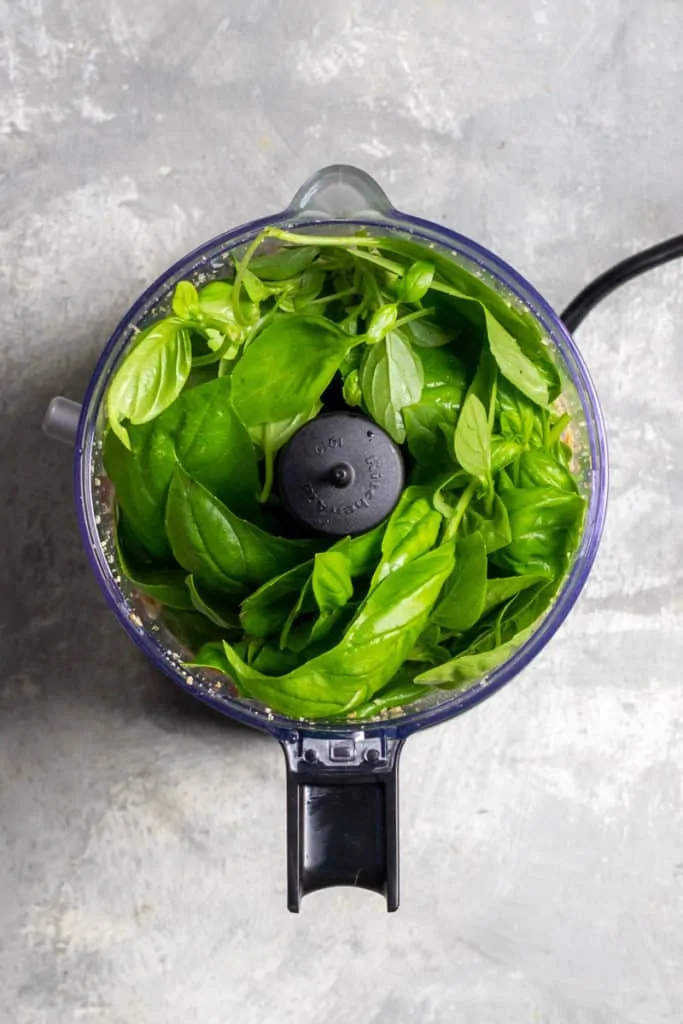
Close the lid, start pulsing the food processor, and while the it's running, drizzle olive oil into the basin.
Keep adding oil and chopping until the ingredients are all incorporated and they form a paste.
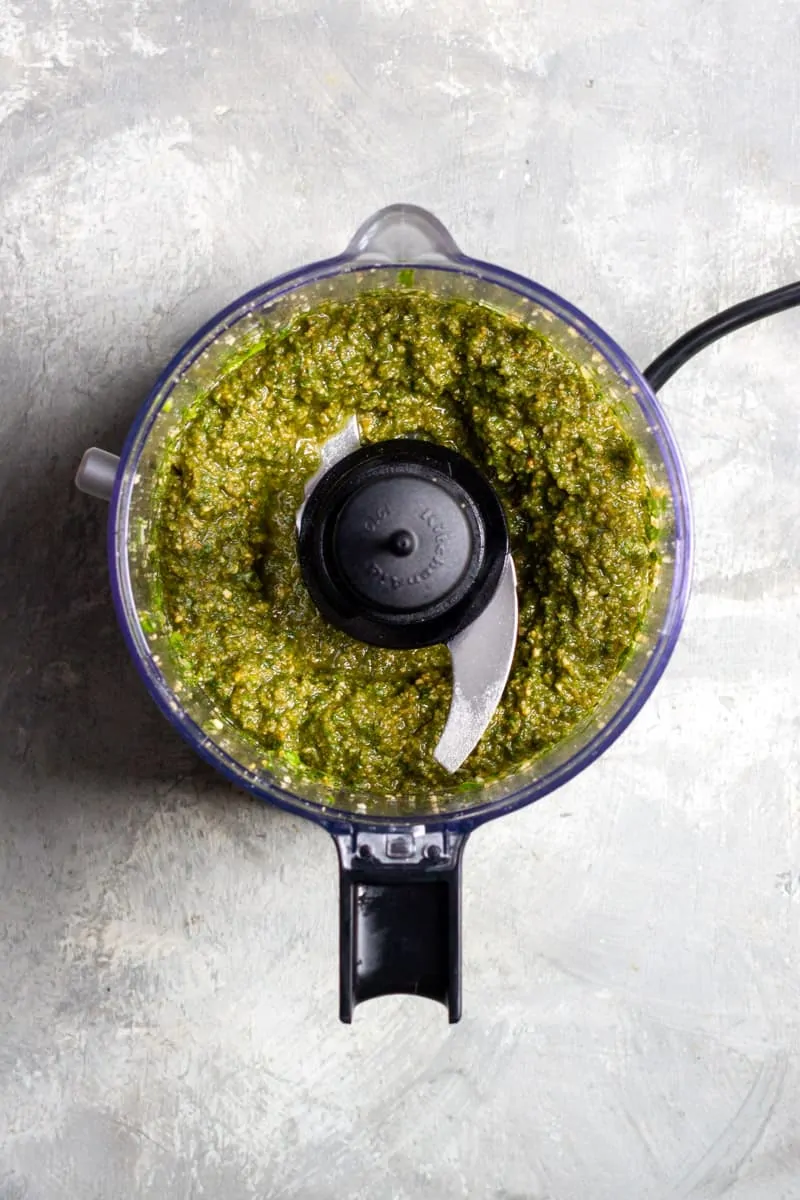
At this point, I like to add a little lemon juice or lime juice to help brighten the flavors and preserve the green color.
The juice is totally optional.
If you want to add nutritional yeast, do it now.
Next, you can pack the pesto into a jar and store it in the fridge, or you can prep it for longer storage.
To store the pesto in the freezer, I like to pack it into small silicone molds. I use a silicone ice cube tray. Add pesto to the silicone molds, and then cover the pesto with a little bit more olive oil.
Note that this recipe makes about five ounces of pesto. In the photo below, I used three batches of this pesto recipe to fill an entire ice cube tray.

How Can I Use This Dairy-Free Basil Pesto?
Once your pesto is ready, you can use it in tons of recipes!
It's delicious with fish and meat, like in pesto salmon, grilled pesto swordfish, and pesto chicken and cauliflower.
And one of the easiest (and tastiest) ways to use pesto is to use it with pasta, like in this Mediterranean pesto pasta salad and this salmon pesto pasta.
You can even take it camping with you and make this pesto penne over a campfire, or the make-ahead version, pesto pasta salad!
Store this dairy-free pesto in your freezer, and then enjoy the delicious taste of summer all year long!
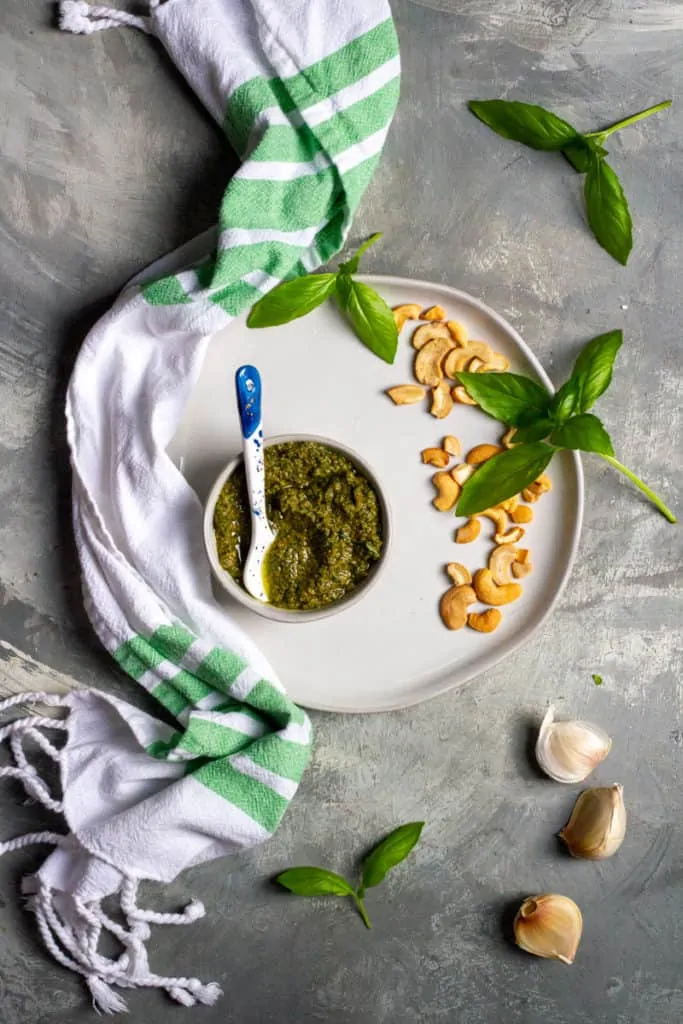
Dairy-Free Basil Pesto
Equipment
Ingredients
- 2 cloves garlic Use more if desired
- ⅓ cup nuts (pine nuts, cashews, or walnuts)
- 2 cups basil, removed from stems, tightly packed
- ⅓ cup olive oil, plus more if freezing pesto
- 2 teaspoons lemon or lime juice, optional (to preserve color) or rice vinegar
- 1 tablespoon nutritional yeast, optional Use more if desired
Instructions
- Add the garlic and nuts to a food processor basin, and chop until finely blended.
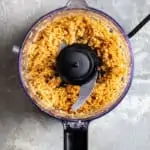
- Add basil to the food processor. Close the processor lid, and begin drizzling the oil into the food processor while chopping. Continue adding the oil until the basil is finely chopped and all ingredients are incorporated into the oil. (You may have leftover oil.)Tip: If your food processor doesn't have an opening in the lid, you can also add the oil in ¼ cup increments, and chop until incorporated.If using, add the lemon juice and/or nutritional yeast, and chop again.

- Fridge storage:Transfer to a glass jar and use pesto within 4-5 days.Freezer storage:Scoop pesto into a silicone mold (such as a silicone ice cube tray). Cover pesto with a thin layer of additional oil, and freeze until hardened. Transfer pesto to a freezer bag, and use within 6 months.
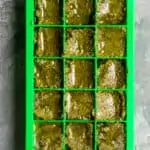
Notes
- My pesto is brown. If your pesto immediately turns brown after blending, your food processor might have a dull blade, which can cause the basil to bruise. (I speak from experience.)
- My pesto is too garlicky. As written, this recipe should be mildly garlicky, but if your cloves are extra-large, the garlic could be more pungent. Let the pesto sit for a day (in the fridge), and see if the flavors mellow. If not, use the pesto to season garlic bread.

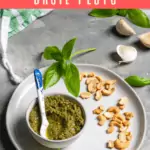
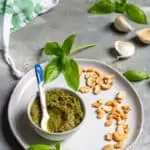

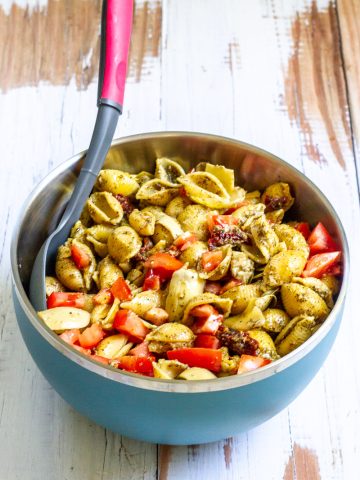


Dana
So easy and delicious! Freezes nicely in ice cube trays.
Sarah Trenalone
Yay! I'm so glad you loved it 😀
Alisha Trenalone
Delicious! We spread a layer of this pesto on top of some salmon, and it was so good. It kept really well in the freezer too.